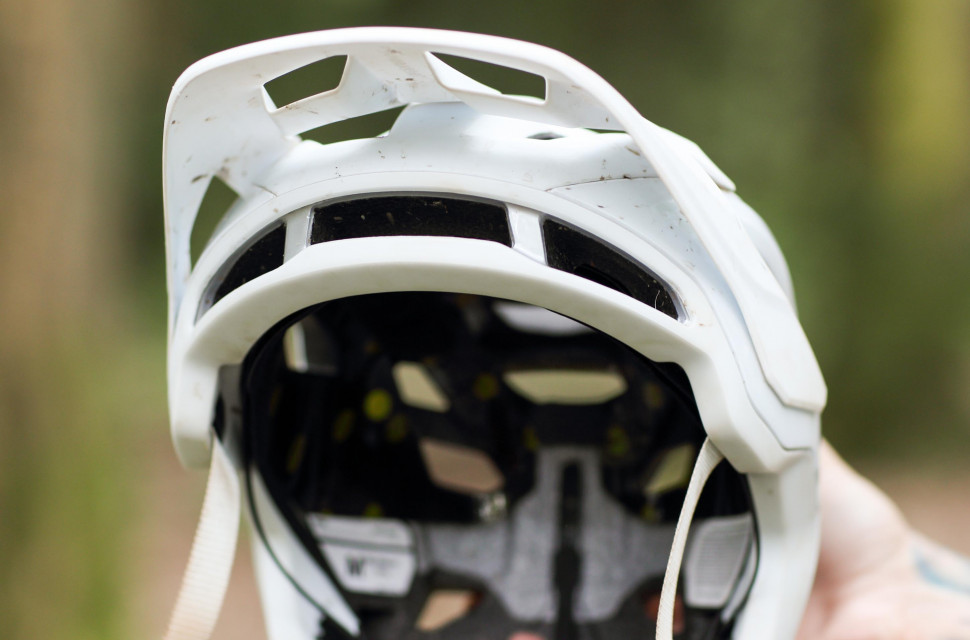


I. Introduction
Cycling helmets are essential safety gear for all cyclists, regardless of their experience level or riding style. They play a crucial role in protecting the head from impact in the event of a crash, reducing the risk of serious injuries or even fatalities. However, like any piece of safety equipment, bike helmets have a limited lifespan and should be replaced periodically to ensure optimal protection.
-
Understanding Bike Helmet Lifespan
The lifespan of a bike helmet is primarily determined by two factors:
-
Material Degradation: Over time, the materials used in bike helmets can degrade due to exposure to various elements, such as ultraviolet (UV) rays, extreme temperatures, and chemicals. This degradation can weaken the helmet’s structure and compromise its ability to withstand impact.
-
Impact of UV Rays: Exposure to sunlight is a major contributor to material degradation. The UV rays can break down the polymers and resins used in the helmet’s shell and foam liner, making them brittle and less effective at absorbing impact forces.
-
Extreme Temperatures: Both very hot and very cold temperatures can also negatively affect the helmet’s materials. High temperatures can cause the materials to become soft and lose their shape, while low temperatures can make them more rigid and prone to cracking.
-
Chemicals: Exposure to chemicals like solvents or cleaning products can weaken the helmet’s materials. Avoid using harsh chemicals on your helmet and stick to gentle cleaning methods.
-
-
Impact History:
If you have been involved in a crash with your bike helmet, you should replace it immediately, even if it appears undamaged.
The impact can cause internal damage to the helmet’s structure that may not be visible to the naked eye, weakening its protective capabilities.
-
Internal Damage: A crash can cause microscopic cracks or fractures in the helmet’s shell or foam liner. These cracks may not be visible on the surface but can significantly reduce the helmet’s ability to absorb impact energy.
-
Compromised Protection: A compromised helmet may not be able to properly distribute the force of an impact, potentially leading to serious head injuries in the event of a crash.

-
Signs of a Worn-out Bike Helmet
Here are some signs that indicate your bike helmet may need to be replaced:
-
Visible Damage: Check for any cracks, dents, or other damage to the helmet’s shell or foam liner. These signs indicate that the helmet has been compromised and should be replaced immediately.
-
Cracks: Look for hairline cracks on the helmet’s shell, especially around vents or attachment points for straps. These cracks can weaken the structure and compromise protection.
-
Dents: Dents or deformations in the helmet’s shell can indicate internal damage and a reduced ability to absorb impact.
-
Loose or Damaged Straps: Worn or frayed straps may not hold the helmet securely in place during a crash. Replace the helmet if the straps are damaged.
-
-
Faded or Discolored Materials:If the helmet’s materials have faded or become discolored, it’s a sign that excessive UV rays have exposed them and may have weakened.
- Color Changes: Significant fading or discoloration of the helmet’s shell or straps can indicate a breakdown of the materials due to UV exposure.
-
Loose or Ill-Fitting Helmet: If your helmet feels loose or doesn’t fit snugly, it may not provide adequate protection in the event of a crash.
-
Proper Fit: A well-fitting helmet should sit comfortably on your head without any pressure points. It should not move excessively when you shake your head.
-
Snug but Comfortable: The helmet should feel snug but not too tight. It should not cause any discomfort or headaches.
-
-
Internal Damage: If you have been involved in a crash, even if the helmet appears undamaged, it’s essential to replace it as the internal structure may be compromised.
-

-
Addressing Common Misconceptions about Bike Helmet Lifespan
There are several misconceptions surrounding bike helmet lifespan. Here’s how to debunk some of the most common ones:
-
Myth: Bike helmets have an expiration date like food products.
-
Reality: While some manufacturers may include a production date on the helmet, it’s not an expiration date. The lifespan depends more on material degradation and impact history.
-
Myth: If my helmet looks fine, it’s still good to use.
-
Reality: Damage to a helmet may not always be visible. Internal cracks or weakening of the structure can occur even with minor impacts. Replacing a helmet after a crash is crucial for safety.
-
Myth: I only ride occasionally, so my helmet will last longer.
-
Reality: Even with infrequent use, the helmet’s materials can degrade over time due to exposure to UV rays and other environmental factors.
·Responsible Disposal of Old Bike Helmets
Once your bike helmet reaches the end of its lifespan, disposing of it responsibly is important. Here are some options:
-
Recycling Programs: Some manufacturers or cycling organizations offer helmet recycling programs. These programs collect and disassemble old helmets, repurposing some materials or ensuring proper waste management.
-
Donation Programs: If your helmet is still in good condition but slightly outdated, consider donating it to a cycling program or organization that provides helmets to those in need.
-
Safe Disposal: If recycling or donation options are not available, dispose of your helmet in a way that doesn’t harm the environment. Break it down into smaller pieces (excluding the EPS liner) and dispose of them in your regular trash. Ensure the EPS liner is disposed of responsibly at a facility that accepts hazardous waste.
·Conclusion
By understanding the factors that influence a bike helmet’s lifespan, recognizing the signs of wear and tear, and implementing proper care and storage practices, you can ensure that your helmet provides maximum protection. It’s crucial to be aware that a well-maintained and properly fitting helmet is your best defense against head injuries in the event of a cycling accident. Therefore, investing in your safety by choosing a high-quality helmet that meets safety standards and replacing it when necessary is important. By taking these steps, you can enjoy your rides with the confidence that your head is well-protected, enabling you to fully embrace and experience the joys of cycling.
-
-
-
-
Leave a Reply